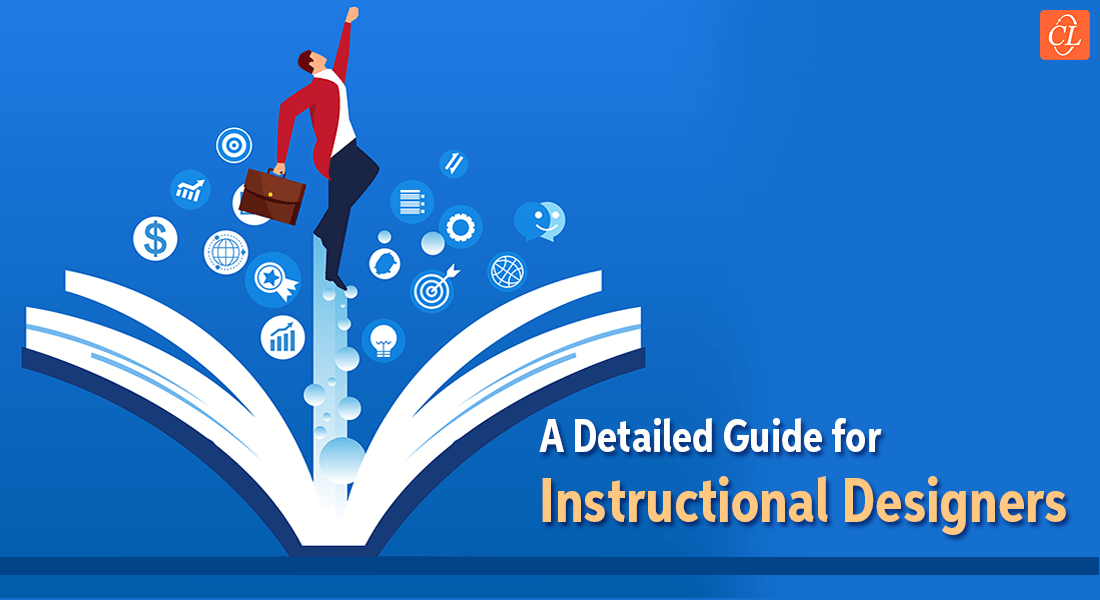eLearning Instructional Design – A Detailed Guide for Beginners

When it comes to eLearning, the instructional designers, and developers of the final product are the unsung heroes responsible for better engagement, retention, and knowledge consumption. The biggest factor at play is the learning experience they generate, i.e., the instructional design they implement. This article contains a guide for instructional designers, developers, and eLearning managers to help you understand what eLearning instructional design really is and how it can help your learning and development (L&D) department thrive.
What Is Instructional Design?
The concept of instructional design, or instructional systems design (ISD), revolves around the ideology that with the perfect design, you can better conceive HOW learners learn, improve the learning culture of your organization, and create better experiences with your content.
Ultimately, with the right instructional design, you can find the most effective way of meeting learning objectives. It’s not just about finding the best content and delivery method (such as choosing between a presentation, interactive course, exercises, or more) but also focuses on the visual appeal, content structuring, and other key elements of your course. Including a joke within the course or something like improving, retention is also a part of instructional design.
Choosing the Right Instructional Design Model Can be Challenging
Here are the 2 common instructional design models:
- ADDIE Model
- Bloom’s Taxonomy
Continue to read to know what they are..
Join us to Learn Powerful Techniques to Make an Impact as an L&D Professional
This shows that instructional design encompasses several things, such as:
- The platform on which you choose to host your eLearning course
- The content within
- How it is structured
- What it includes
- How engaging it is
- How effectively it can get the message across
- The design
- Interactivity (remember, too much interactivity can lead to an overwhelmed audience and may take away from your ultimate message)
- Applications and exercises within the content, and
- Other elements that can help improve the focus, impact, and highlights to ensure better reception and retention of the content.
In short, instructional design is the experience created by your course and perhaps one of the most important pillars of an eLearning venture.
Guide to eLearning Instructional Design
Now that we have a better understanding of what eLearning instructional design is, let us dive into what instructional managers and designers need to keep in mind for it to be effective.
One of the first steps for improving instructional design is making sure that the entire department is on one page regarding the outcome. More ideas are good, but too many ideas may also lead to conflict. For that, there are several instructional design models that you can adopt when going through the project.
However, all of them start off with a detailed discussion between designers, content creators, and project stakeholders under the supervision of the learning managers. This is so that everyone can plan, let out ideas, and discuss what eLearning trend they need to capitalize on.
Let’s have a look at the two of the most common instructional design models and how they can help improve eLearning.
The ADDIE Model
The ADDIE model suggests that every eLearning course (originally designed for training campaigns) needs to go through five distinct stages:
A-Analysis
D-Design
D-Development
I-Implementation
E-Evaluation
This strategy is essentially a cycle where step one can be repeated shortly after you evaluate your outcomes. Your course will improve and get more exciting with every cycle that comes after it. But because the successive approximation model (SAM) is a condensed version of the ADDIE Model created especially to gather feedback and create functioning models earlier in the process, many businesses opt to employ it.
Bloom’s Taxonomy
This is a framework that focuses on first learning about your audience, setting learning objectives respectively, and then determining what your training program needs. Unlike the first model, here you first evaluate and then plan.
When analyzing your audience, Bloom’s Taxonomy suggests that you focus on six cognitive factors, as these are the basic factors needed to grasp a new concept. Originally, these were:
- Knowledge
- Comprehension
- Application
- Analysis
- Synthesis
- Evaluation
However, later, they were changed to help instruction designers get a better understanding of what they want their audience to do. So, they were changed to:
- Remember
- Understand
- Apply
- Analyze
- Evaluate
- Create
The goal of this model is to help you understand the demographics of your audience, their mindset, and how deep you can go with your knowledge. The tone of your content and design may also vary based on that to help you explain your concepts more effectively.
Each level helps you categorize your objectives and target them one at a time. This model gives a more “expanded” model to work with but is effective once implemented, nonetheless. It is important to note that it creates more individualized eLearning programs than what the ADDIE can produce.
Challenges You’ll Face During Instructional Design
As the world of eLearning advances just as quickly as the technology itself, new challenges pop up for instructional designs as well. As microlearning and mobile learning become more popularized, trends become more difficult to keep track of, as well. Here are some challenges that you will have to face with instructional design.
You may have one person handling more than one element of the design and development.
Staying up to date with the latest information may mean you’ll need to update your courses regularly. This means that the design should leave room for updates.
New technologies render the older ones obsolete quickly now. You will need to make sure you migrate to the latest ones regularly.
Over time, even the most innovative and creative eLearning courses can become dull and lead to disengagement. According to research, roughly 87% of employees are disengaged at work, which means there is a good chance of the same happening with your eLearning course as well. You need to keep updating your instructional design regularly.
The primary idea that makes eLearning such an alluring way to learn compared to traditional learning is better engagement, versatility, and ease of retention. eLearning instructional design has helped the industry achieve that, but it is important to understand the value of constant updates and staying vigilant.
Your Next Step
Do you want to improve your company’s training program while using what is effective? And do you want to increase the effectiveness of L&D activities to support the expansion of your business? At CommLab India, we encourage the L&D community to engage in cross-learning and sharing. What else are you waiting for? Join Learn Flux, a community where L&D professionals can discuss innovative approaches to achieving tech-enabled training and draw motivation from the accomplishments of other L&D professionals. Join right away! So, register with LearnFlux! The major goals of this three-day online learning program are learning and sharing.




![All About Quiet Quitting [The Concept + Causes + Prevention + 3 Instructional Design Strategies to Rescue]](https://blog.commlabindia.com/hubfs/Imported_Blog_Media/All-About-Quiet-Quitting-The-Concept-Causes-Prevention-3-Instructional-Design-Strategies-to-Rescue.jpg)
